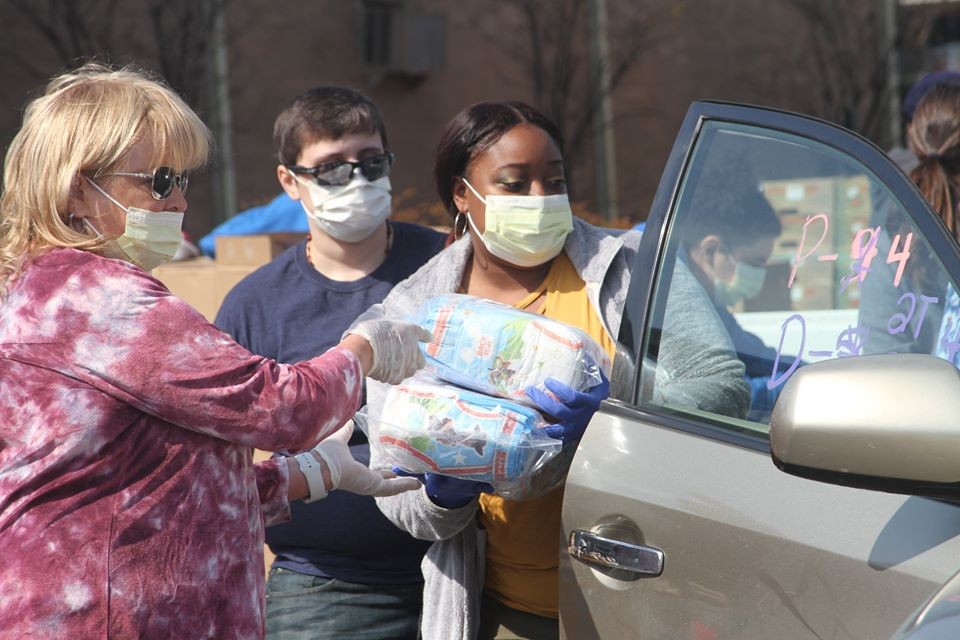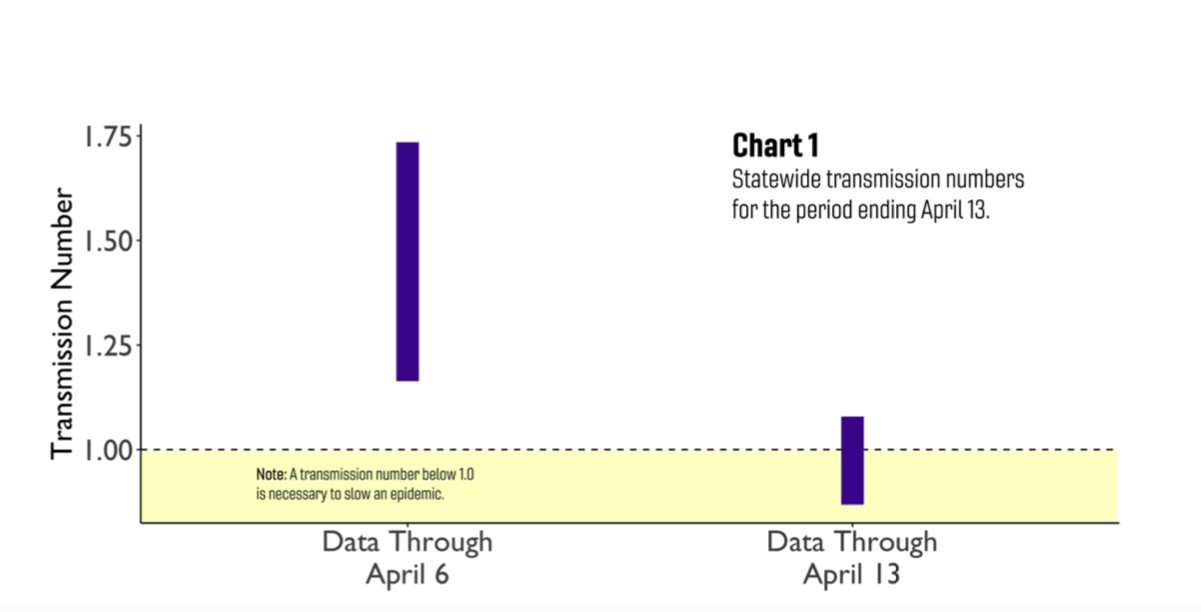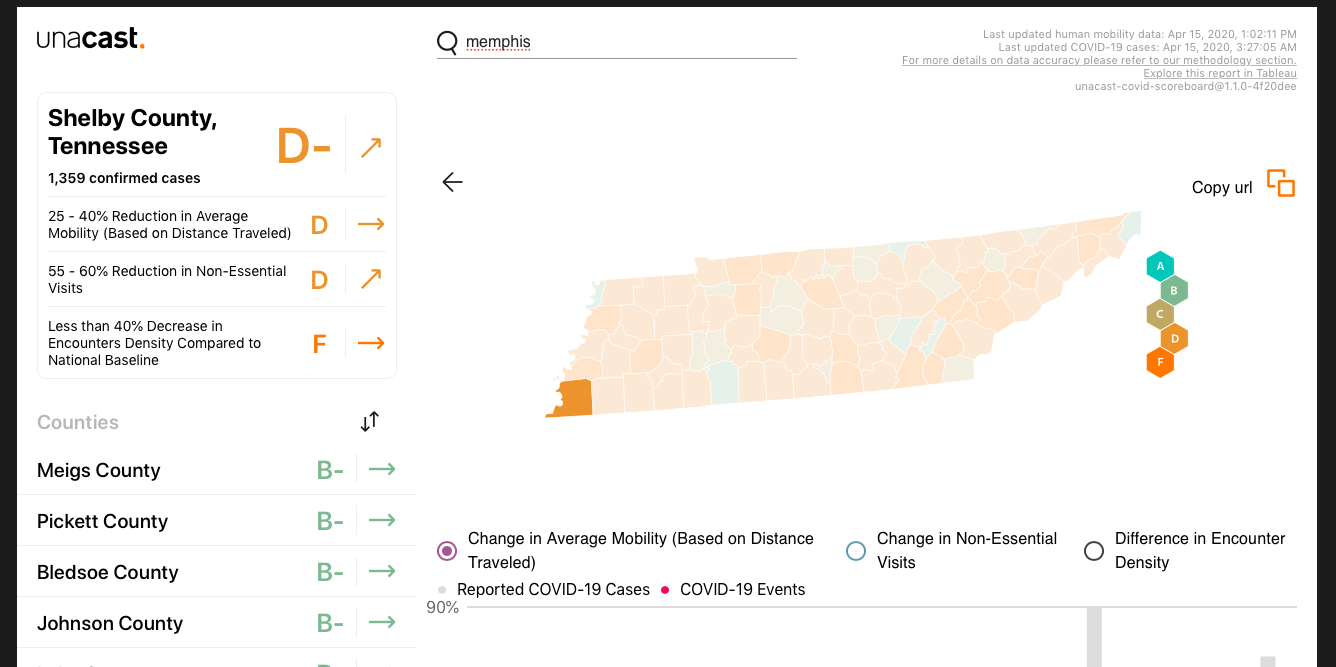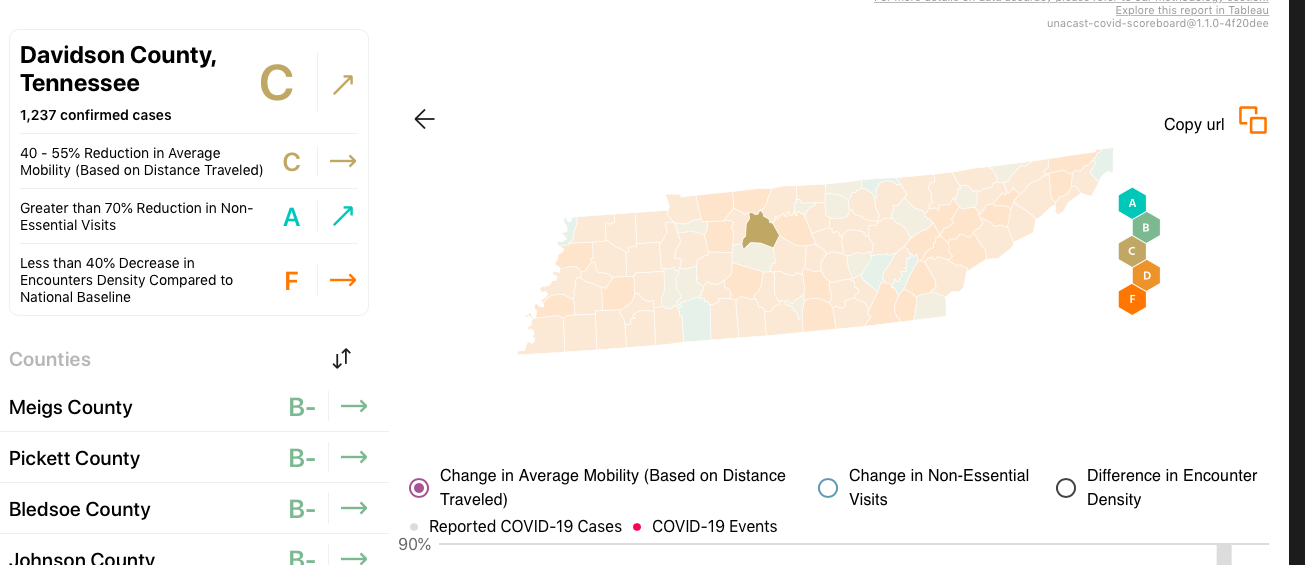 Facebook/Mid-South Food Bank
Facebook/Mid-South Food Bank
Volunteers load food into a car at a mobile food pantry
Tennessee’s coronavirus transmission rate fell over the past week, according to new data from researchers at Vanderbilt University, though the virus situation here remains “delicate and uncertain.”
Virus models from the Nashville university pushed the state’s peak of the virus from mid-April, according to one national model, to mid-May or mid-June, depending on new restrictions on social distancing.
New data shows the rate of virus transmission in the state fell from somewhere as high as 1.75 percent last week to as high as just over 1 percent this week.

The Vanderbilt researchers are presenting the data in confidence bands, which show a high-range estimate and a low-range estimate. These estimates are used to show information that has incomplete or noisy data.
In the case of Tennessee’s virus data, the researchers say the bands are important to show information for regions that have fewer cases and in which there may be greater uncertainty due to testing availability, delays in the return of tests to people, and local clusters of cases like in nursing homes.
Though the state’s overall transmission rate has fallen, progress across the state is not uniform. South Central Tennessee counties like Hickman, Giles, and Bedford (home to Bonaroo) Counties fared the worst with transmission rates over 2 percent. The Knox East region, home to Knoxville, had a transmission rate of nearly 1 percent to nearly .1 percent.

For Memphis, the transmission rate is somewhere between about 1.3 percent to just under 1 percent, according to the model. The figure indicates that case numbers here and in three surrounding Tennessee counties may continue to rise.
The area around Nashville fared the best in the new model data. The area’s transmission rate was somewhere below 1 percent to nearly .5 percent. This means the virus in the area has slowed and maybe even started to shrink.
John Graves, a Vanderbilt professor who is studying the virus, told The Tennesseean newspaper Thursday, the decrease there is the result of Nashvillians embracing social distancing and reducing their movements, as shown by traffic camera and cell phone tracking data.
The latest data from Unacast, the company that studies travel and movement from anonymous cell phone data, most recently gave Shelby County a D- on its coronavirus travel. The company gave Davidson County (Nashville) a C.
 Unacast
Unacast
 Unacast
Unacast
The model also compared Tennessee to Singapore and Sweden. Each area responded differently to the virus and now has different outcomes, even after just one week.
Sweden stressed voluntary – rather than mandatory – social distancing practices. Singapore initially kept the virus’ spread contained but recently imposed mandatory social distancing orders as a result of a spike in cases.
Sweden’s numbers remained stable at just over 1.2 percent, noting that cases are still rising. Singapore saw its number hover at 1 percent and are now increasing to above 2 percent. All of this was just over the last week.

Researchers stressed the key takeaway from the new information is “Tennessee’s recent progress, while real and positive, is fragile.”
“Our analysis of the recent data indicates that without further changes to the transmission number, Tennessee may be settling into a ’simmer,’” reads the modeling report. “Should the transmission number not increase or decrease, the number of statewide hospitalizations would remain stable moving forward.
“Should the transmission number increase to above 1.0, hospitalizations would increase. And if the transmission number declines, hospitalizations would fall further.
[pullquote-1] “We stress the current situation is delicate and uncertain. This is underscored by the divergent experiences of Sweden and Singapore highlighted earlier.
“Both countries avoided mandatory social distancing at first, and only one continues along this path. Singapore, as shown above, saw its progress unravel quickly and instituted widespread mandatory social distancing on March 26th.
Sweden maintained a transmission number between 1.1 and 1.4. If that continues, cases, hospitalizations, and deaths in Sweden will not be moderate.
“Indeed, with a population of 10.2 million — 50 percent larger than that of Tennessee (6.8 million) — Sweden, on April 15th, reported 1,203 deaths overall. Tennessee, by comparison, has reported a total of 135 deaths as of April 15th.”
Read the new report for yourself here:
[pdf-1]